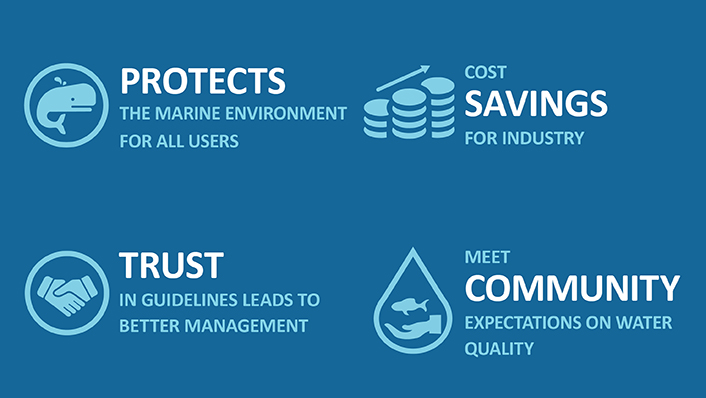The challenge
Contaminants released into marine environments from human activities like wastewater outflow and discharges from industry, need to be kept within safe levels to protect the health of marine animals, habitats and the people who depend on the ocean.
The Australian and New Zealand water quality default guideline values (DGVs) set the water quality benchmark industry must achieve to ensure protection of our marine ecosystems. They are applied to contaminants like pesticides, anti-foulants, pharmaceuticals and metals, and underpin environmental management.
The current DGVs for Australia and New Zealand are derived using statistical methods that are 20 years old and do not incorporate new developments in the field. As these guidelines are one of the key tools used by regulators, the methods which underpin their derivation should evolve with the increased scientific knowledge to ensure they are as robust as possible.
The approach
The Australian Institute of Marine Science (AIMS) collaborated with key Australian and Canadian experts to further develop and improve a statistical software tool to calculate water quality DGVs for Australia, New Zealand and Canada. The tool harnesses recent innovative statistical methods that provide better, more robust estimates of safe contaminant concentrations for any industry which dischargers into marine and freshwater environments, for example oil and gas extraction, or mining and aquaculture.
To test their new tool, the scientists examined how the new method compared to the existing method in Australia, finding that the new tool always found a solution (i.e., a safe concentration), reduced bias in estimates of the safe concentration and was statistically more likely to be correct.
The impact
Improved reliability of the guidelines will reduce the need for unnecessarily conservative approaches that can frequently have high cost to industry.
The public and environmental regulators can be assured that the best available practices, techniques and statistical methods are being used to derive water quality guidelines to manage discharges and best protect the health of the local marine ecosystems.
Industries which discharge into marine environments can be assured that the guidelines that are derived are scientifically credible and legally defensible.
AIMS further developed and improved the software tool in collaboration with water quality consultants working across industry.
The project was funded by the Australian and Canadian Governments.


